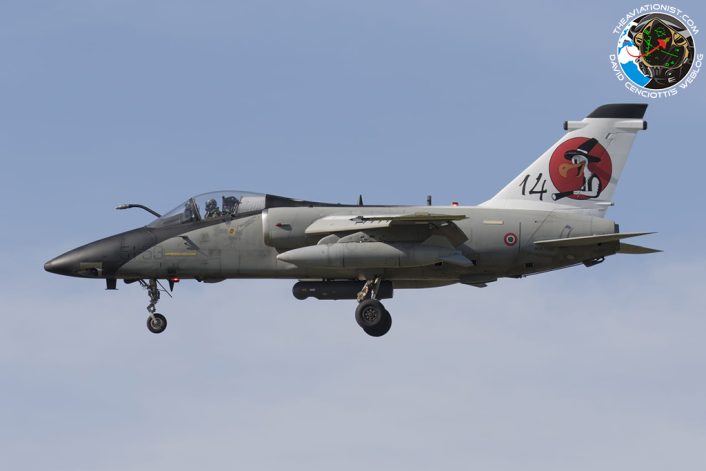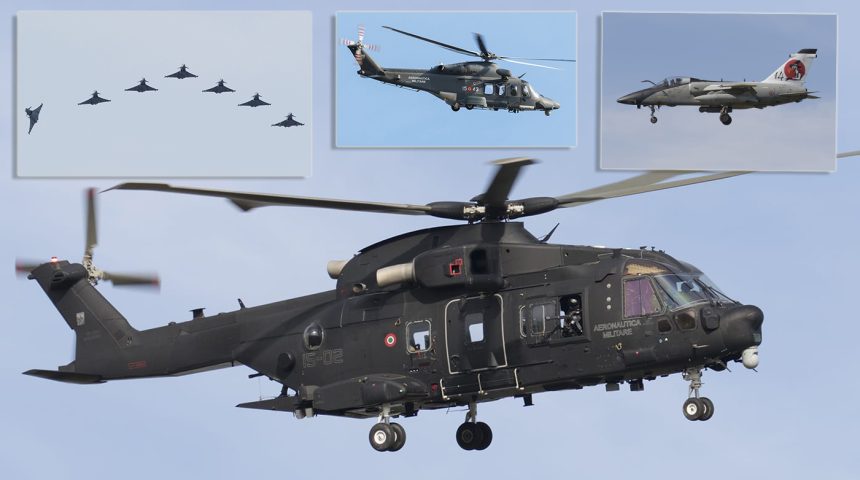Last month, the Italian Air Force deployed its Eurofighter Typhoon, AMX, HH-101A and HH-139A to Decimomannu Air Base for the Personnel Recovery Week, an exercise designed to train units in planning and executing the recovery and reintegration of personnel isolated in hostile/crisis areas.
From Oct. 19 to 30, several Italian Air Force units took part in PRW (Personnel Recovery Week), an exercise focusing on simulated Personnel Recovery scenarios where fixed wing and rotary wing aircraft cooperated with Special Forces operators.
During the two-week exercise, whose first iteration took place in 2019 (although the service has started working on a PR scenario in 2018), Eurofighter Typhoons belonging to the 4°, 36°, 37° and 51° Stormo (Wing), respectively based at Grosseto, Gioia del Colle, Trapani and Istrana, along with the AMX of the 51° Stormo from Istrana, the HH-101A and HH-139A of the 15° Stormo from the CSAR Centers at Pratica di Mare and Cervia, and personnel from the 17° Stormo “Incursori” (Raiders Wing), deployed to Decimomannu, home of the AWTI (Air Weapons Training Installation) for the exercise.

The presence of both the F-2000A and the AMX is remarkable: with the A-11 Ghibli (as the AMX is designated) approaching its retirement after more than 30 years of service, the capability to cooperate with the aerial and ground “parties” in a PR mission is being transferred to the Eurofighter line. All the frontline Typhoon units, including the 132° Gruppo (Squadron), which is currently operating both the AMX and the recently assigned F-2000s, took part in the exercise. Depending on the type of mission, the Typhoons also flew with the centerline Litening targeting pod.


Also supporting the PRW were the G550 CAEW (Conformal Airborne Early Warning) aircraft of the 14° Stormo from Pratica di Mare, which acted as Airborne Mission Coordinator, and the MQ-1C Predator A+ drones of the 32° Stormo from Amendola, in the ISR (Intelligence Surveillance Reconnaissance) mission.
The training activities were carried out in isolated areas located inside the Sardinian ranges which offered a wide variety of morphological characteristics: from the plain terrain to the mountains, the orography chosen for the exercise is perfectly suited to create different exfiltration scenarios.


Although each mission was different from one another, generally speaking a standard PR mission developed in the following way:
- A PR mission is called to recover military personnel at an extraction point
- A CAEW takes over the airspace management and control, directing the on-call fighters towards the target area/extraction point
- The tactical aircraft (F-2000s and AMXs) reach the area, identify the enemy positions located nearby and attack them to clear the way to the rest of the rescue team.
- Once the area is deemed safe from enemy forces, reconnaissance passes are carried out to locate the isolated personnel
- In the meanwhile, the helicopters (HH-101 and HH-139) with the extraction forces have reached the area
- The helicopters land and the special forces disembark
- The helicopters take off again and start patrolling the area while the team on the ground identifies the stranded personnel and provides medical support, if needed
- The tactical aircraft provide armed overwatch as the rescue mission progresses. They are ready to engage the enemy if needed
- When the ground team signals they are ready for the exfiltration, the helicopters land again and egress the contested airspace under CAEW control and with fighter escort.
Our contributors Alessandro Caglieri and Giovanni Maduli visited Decimomannu during the PRW and took the photos of the aircraft involved in the exercise that you can find in this article.









